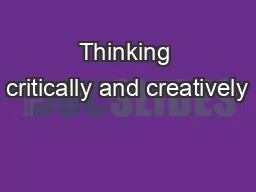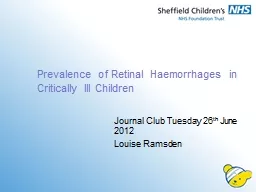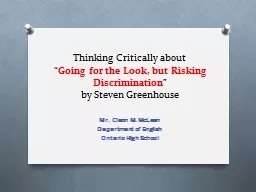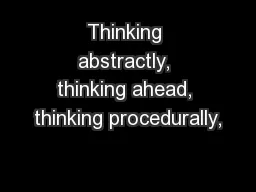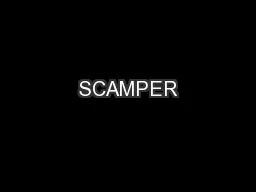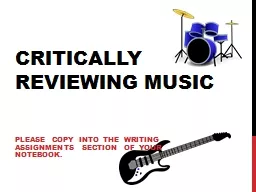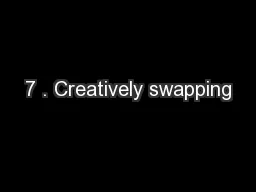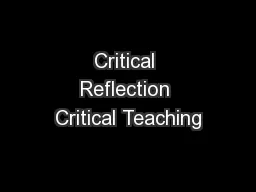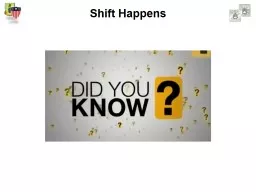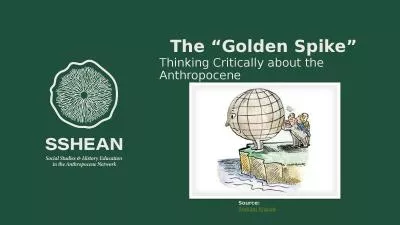PPT-Thinking critically and creatively
Author : lois-ondreau | Published Date : 2017-04-05
By MsRamirez amp MrKim Introduction Individual person has their own different way of solving problem through thinking but to go above and beyond there are two ways
Presentation Embed Code
Download Presentation
Download Presentation The PPT/PDF document "Thinking critically and creatively" is the property of its rightful owner. Permission is granted to download and print the materials on this website for personal, non-commercial use only, and to display it on your personal computer provided you do not modify the materials and that you retain all copyright notices contained in the materials. By downloading content from our website, you accept the terms of this agreement.
Thinking critically and creatively: Transcript
Download Rules Of Document
"Thinking critically and creatively"The content belongs to its owner. You may download and print it for personal use, without modification, and keep all copyright notices. By downloading, you agree to these terms.
Related Documents

